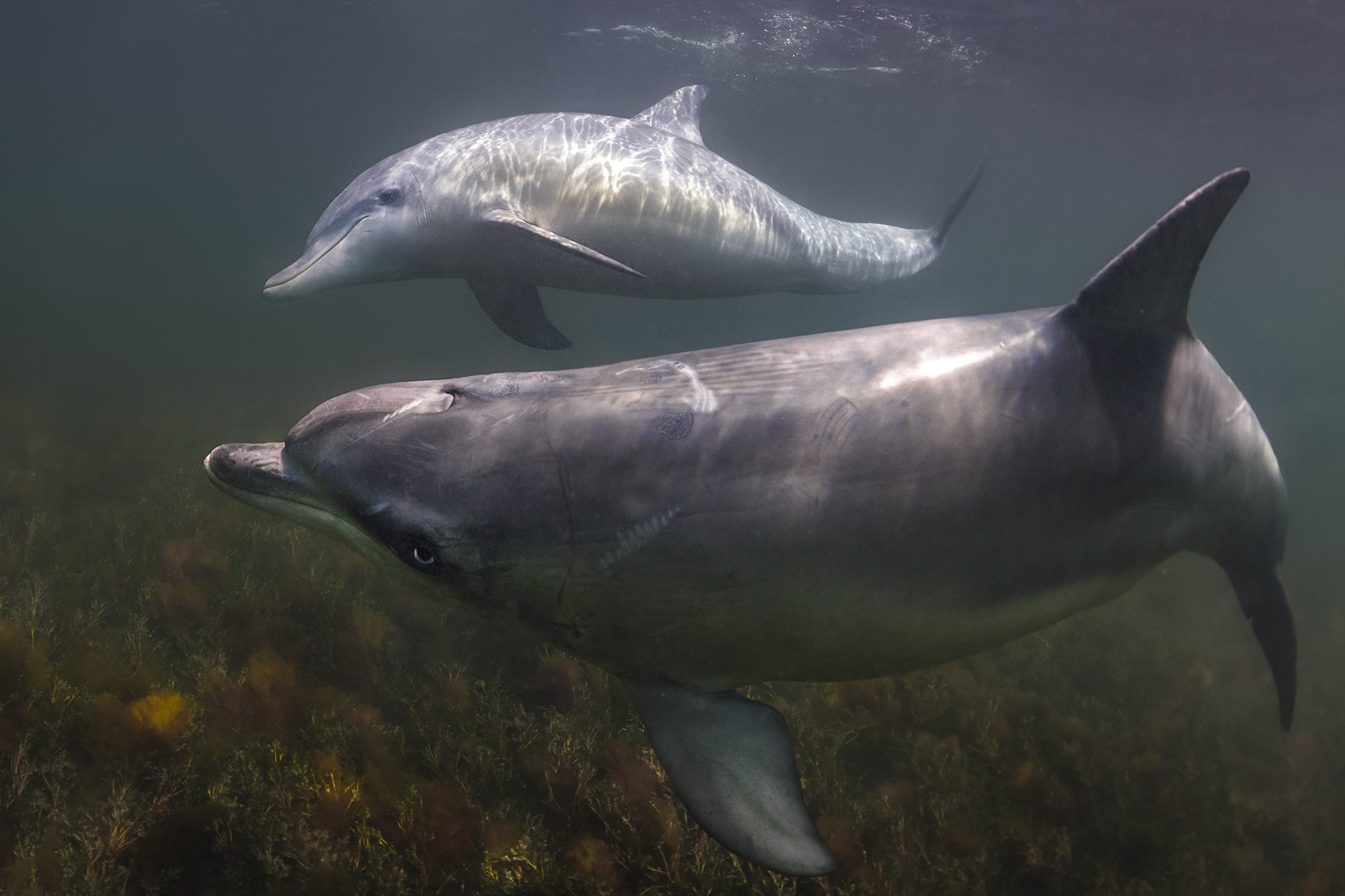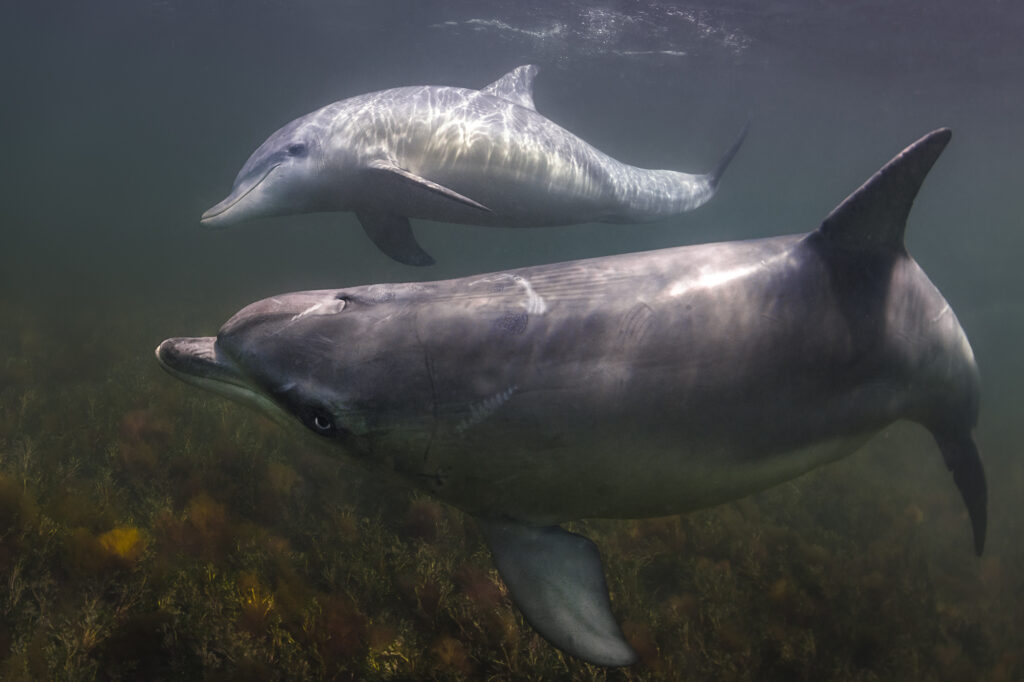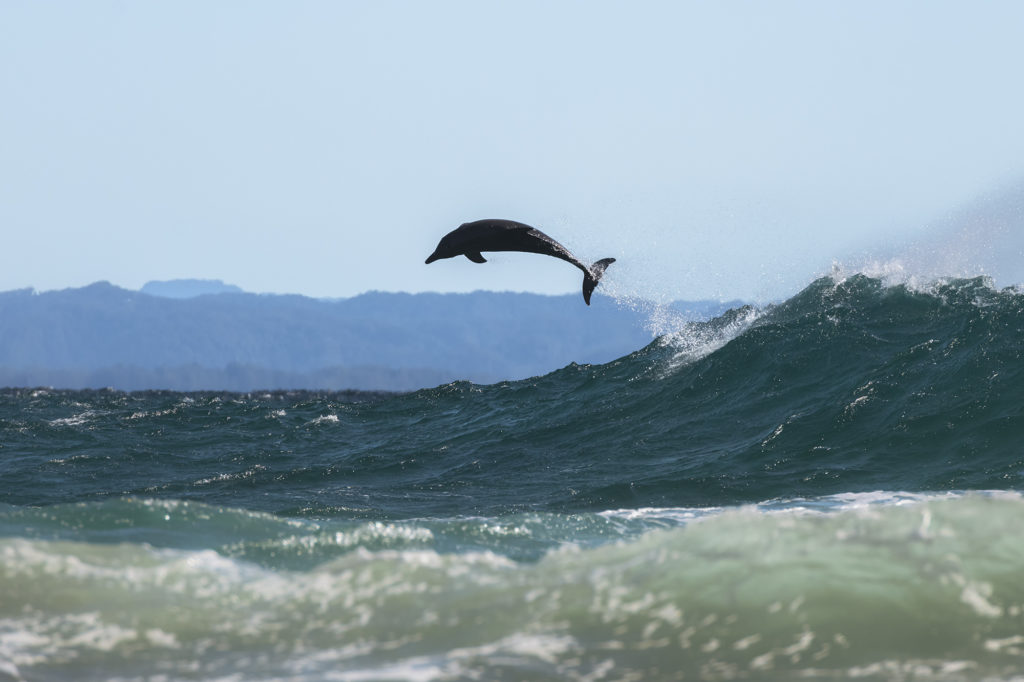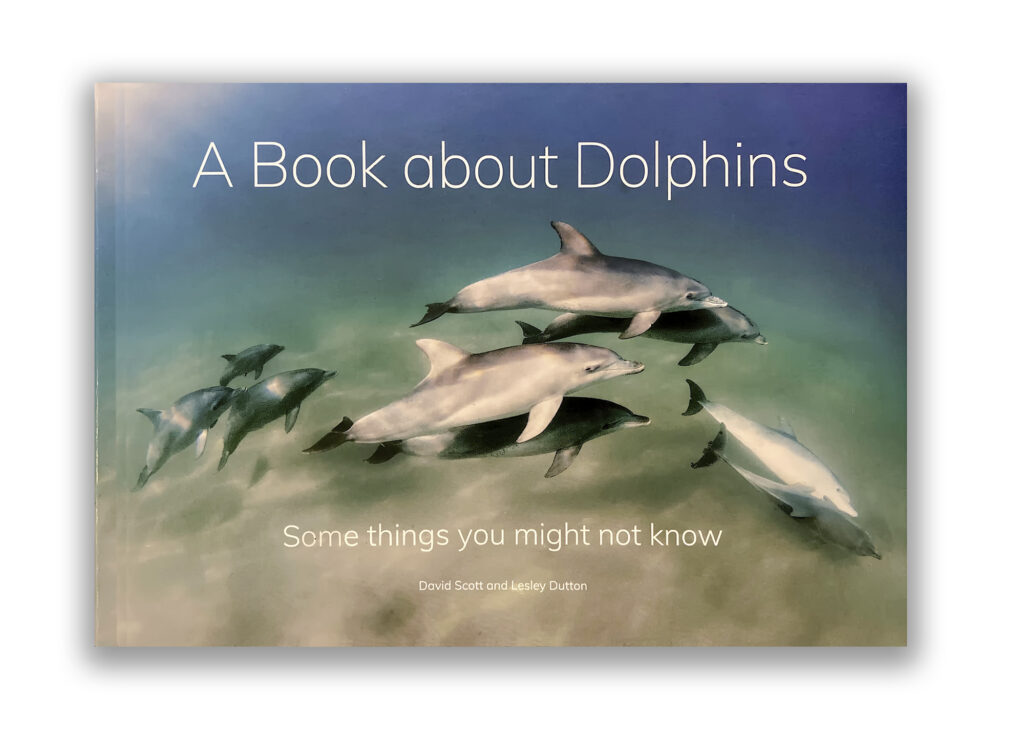There are 40 extant species named as dolphins. Dolphins range in size from the relatively small 1.7m long and 50-kilogram bodied Maui dolphins to the 9.5m and 10-tonne killer whale.
Some dolphins can travel at speeds of 29 km/h and can sometimes leap about 9 meters. The killer whale is the second-fastest marine mammal, reaching maximum speeds of 56 km/h.
Dolphins’ skeletal anatomy allows them to be fast swimmers. All species have a dorsal fin to prevent themselves from involuntarily spinning in the water.
Dolphins frequently leap above the water surface, this being done for various reasons. When travelling, jumping can save the dolphin energy as there is less friction while in the air. This type of travel is known as porpoising. Other reasons include orientation, social displays, fighting, non-verbal communication, and entertainment.
Some species are well adapted for diving to great depths. Some can selectively slow their heart rate to conserve oxygen. Some can also reroute blood from tissue tolerant of water pressure to the heart, brain, and other organs.
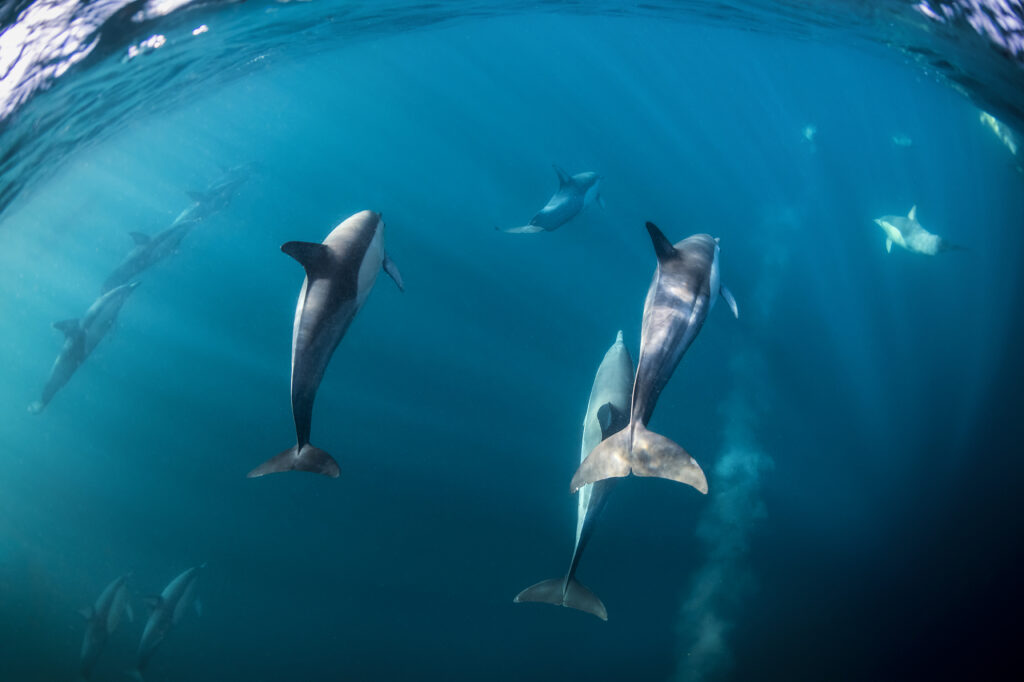
Underwater Paradise
No one knows how deep a dolphin can dive. In 2016, several dolphins who trained in Bermuda went well below 600m and one set the current record of 1008m. The pressure at this depth is 101 times greater than at the surface.
Dolphins are thought to be some of the smartest animals on the planet, challenging the great apes for the top spot. They are also extremely curious and often approach people to investigate.
Dolphins are famous for having the second-largest brain-to-body-mass ratio after humans. They also come second in having brains much bigger than the average for mammals (humans 7x larger, dolphins 4-5x larger). This is curiously excessive for both species, as neither needs so much grey matter just to catch fish.
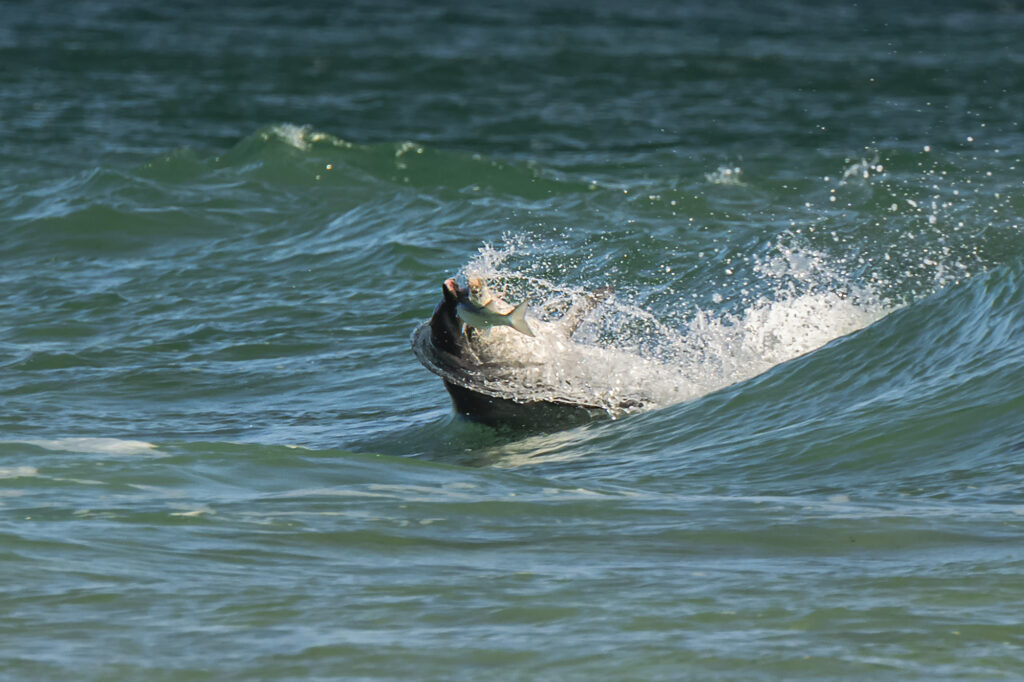
Dolphins have great short-term memory, but also outstanding long-term memory, as displayed by captive dolphins who have recognized former pool mates after being separated from them for 20 years.
One evolutionary theory to explain this puzzle is that it was the emerging need to track the intricate webs of friendship, moods, relationships, strategies, and intentions, of both oneself and others, that required a lot more brainpower.
Planning & strategy are in dolphins’ intellectual repertoires too. Some captive dolphins that were rewarded for bringing litter to their trainers, for example, began to stow large pieces of paper rubbish at the bottom of their pool. By then returning repeatedly to tear off small pieces from their stash they maximized the number of fish they received for their clean-up efforts.
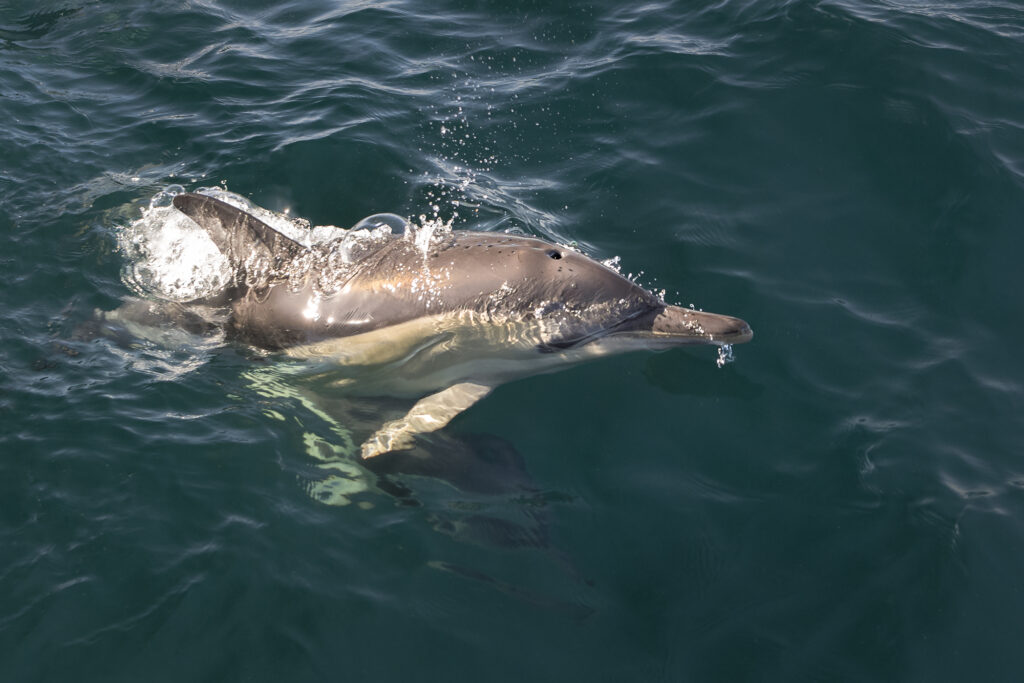
Dolphins are inventive and have developed different ways to feed in different places. They teach many techniques to their offspring.
Some populations echolocate fish hiding below the sand, then scare them out by digging with their beaks. However, this works only for fish with internal swim bladders.
To find bladderless fish they couldn’t ‘see’ using sonar, the dolphins of Shark Bay, Australia, could only dig. Finding this uncomfortable, they began holding bits of local sponges to protect the tips of their beaks from abrasion. This knowledge is mostly transferred by mothers to daughters, unlike simian primates, where knowledge is generally passed on to both sexes. Using sponges as mouth protection is a learned behavior. Another learned behavior was discovered among river dolphins in Brazil, where some male dolphins use weeds and sticks as part of a sexual display.
You can find more interesting facts about dolphins in the book titled “A Book about Dolphins” which I used for this story series.
The authors, David and Lesley, put their hearts and souls into this amazing book. They have worked for more than a decade with wild dolphins in the Port Stephens-Great Lakes Marine Park. Only their love and passion exceeds their knowledge about these majestic animals.
Please contact me if you are interested in purchasing this amazing book.
